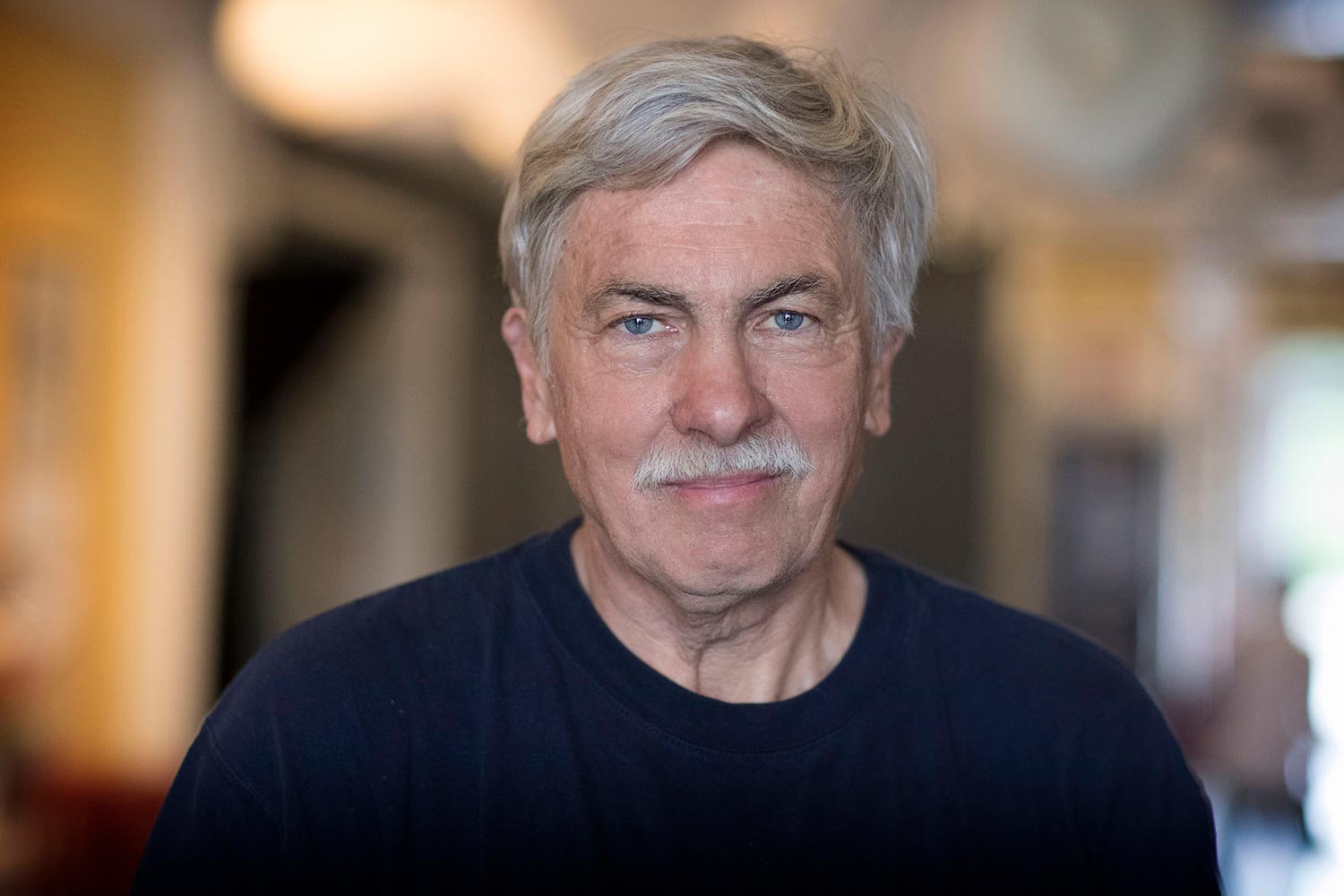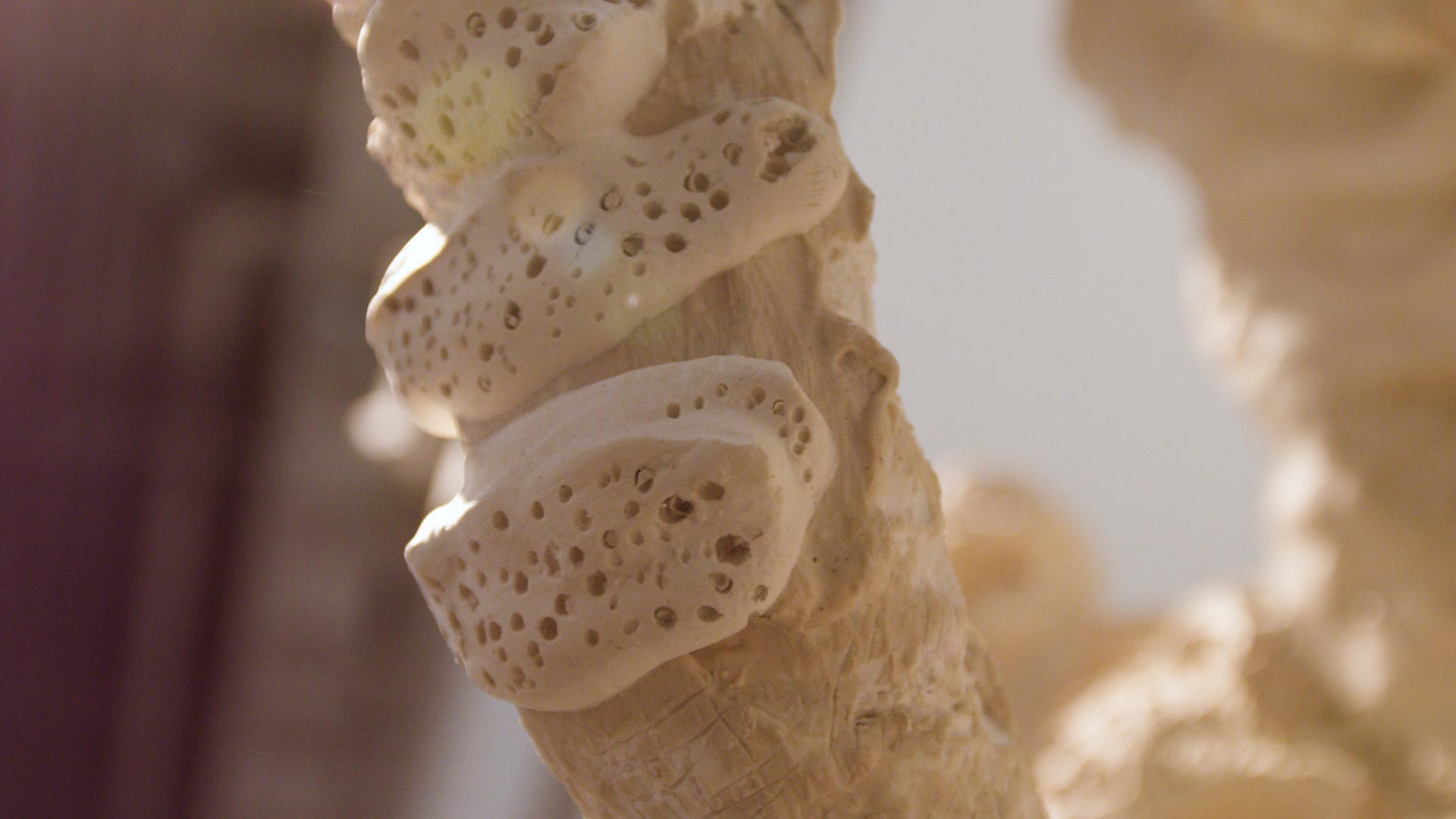University of Virginia sculpture professor William Bennett took his first sculpture class as a third-year student at Bucknell University. It’s not hyperbole to say it changed his life.
“Sculpture really saved me,” Bennett said quietly, sitting in the Ruffin Hall studio where he now works with UVA students. He still keeps in touch with his professor from that class, now a valued mentor.
For 40 years, he has been helping UVA students discover similar experiences through courses like his January term offering, “The Human Figure,” featured in the video above.
Those students are the latest in four decades of ’Hoos who count Bennett as both teacher and mentor. Bennett was hired in 1979. That might seem like a long time ago, but he points out that his students are still referencing sculptures that are thousands of years old.

William Bennett was hired as a sculpture professor in 1979 and has spent the past 40 years sharing his passion for sculpture with his students. (Photo by Dan Addison, University Communications)
“I ask them to reproduce one of the earliest sculptures ever made, which is about 40,000 years old,” he said. “We are still remaking these ancient sculptures, and the issues they address don’t seem old. That is one of the things I love about sculpture – it’s such a big, long tradition.
“Forty years is just a blip, a flash in the pan,” he said, chuckling.
In “The Human Figure” course, many students went from knowing little about sculpture – the class had no prerequisites – to mounting an exhibition of their own work. That transformation neatly encapsulates Bennett’s teaching style, where the process of sculpting is just as important as any sculpture students create.
“Making is a form of thinking,” Bennett said, repeating a mantra he uses often. “That is something I really care about. … Thinking is a process of doing, of trying and experimenting with materials.”
He cites a favorite quote from Richmond sculptor Elizabeth King: “Process saves us from the poverty of our intentions.”
“All you need is a little place to get started,” Bennett said. “Then, you can enjoy the process and surprising things can happen.”
Good things happen for UVA and Charlottesville once Bennett dives into that process. His sculptures have been installed and exhibited all over the country, and his work – and that of his students – is scattered all over town.
One of his recent advanced sculpture classes created six commissioned pieces for the Main Street Market, home to several restaurants, shops and grocers near downtown Charlottesville. Their pieces – ranging from colorful fish sculptures near a seafood shop to a light-catching geometric piece gracing the building’s entrance – now add visual interest to the industrial-styled indoor space.
Another project took Bennett’s sculpture students to nearby Baker-Butler Elementary School, where they worked with elementary students to create an amphitheater and mock archeological site housing more than 1,500 ceramic artifacts created by hundreds of Baker-Butler students. Subsequent fifth-grade classes will spend the next three decades rediscovering the buried treasures, learning about archeology in the process.
Outside of his projects at UVA, Bennett is also working on his own sculptures. He uses a range of materials, including ceramics, wood, glass, metals and fabric. Right now, he is finishing a large piece that includes a model house set upside down at an angle on a large circular base - about 3 feet tall and 9 feet wide. A large, ladder-like shard juts out of the house, spearing the moon suspended above. The whole thing can rotate when viewers step on the platform and turn an attached steeple.
“A lot of my work has an interactive component,” Bennett said.
He is also continuing to explore the digital fabrication technologies that have changed the way sculptors and many other artists approach their work.
“There have been some huge changes,” Bennett said. “Whoever replaces me at UVA will have a whole different set of tools and technologies.”
He cites Falcon Heavy, the rocket launched by Elon Musk’s company SpaceX on Tuesday, as a recent example of the sheer scale and power of expanding technology. The launch propelled a red Tesla Roadster convertible – complete with a mannequin “Starman” astronaut – into orbit around the sun, while successfully returning two boosters used in the launch to land.
“I showed the video to my students the next day,” Bennett said. “I reminded them that they get to be alive during this important time, with this amazing technology.”
Media Contact
Article Information
February 8, 2018
/content/four-decades-professor-william-bennett-sculpting-more-just-clay

